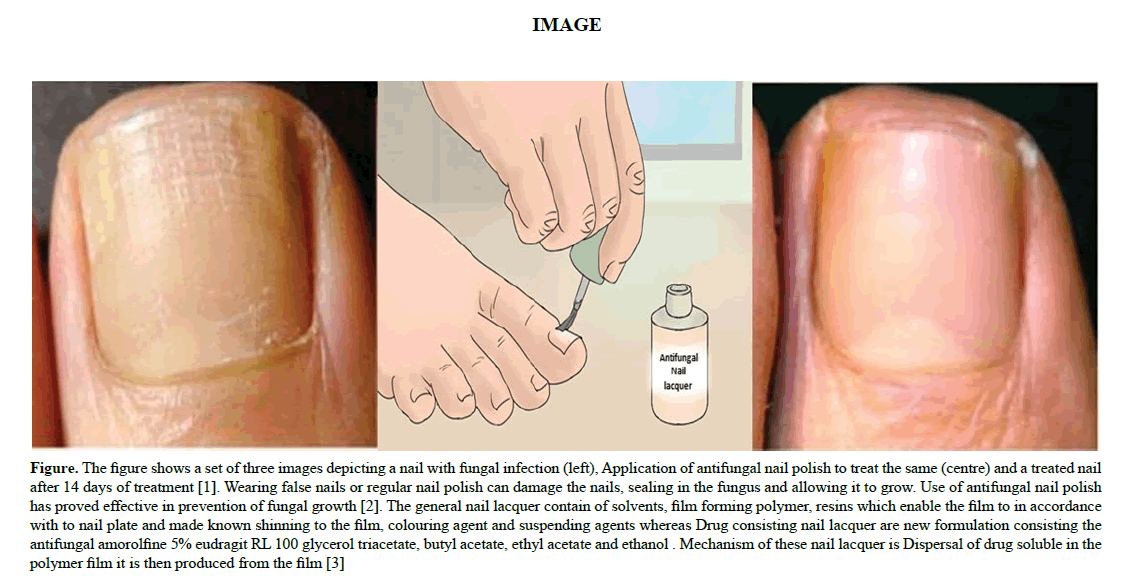ISSN : 2348-1927
Annals of Biological Sciences
An Overview of the Usage of Antifungal Nail Lacquer
Susan Bones*
iMedPub LTD483, Green Lane, London, N13 4BS, UK
Figure 1: The figure shows a set of three images depicting a nail with fungal infection (left), Application of antifungal nail polish to treat the same (centre) and a treated nail after 14 days of treatment [1]. Wearing false nails or regular nail polish can damage the nails, sealing in the fungus and allowing it to grow. Use of antifungal nail polish has proved effective in prevention of fungal growth [2]. The general nail lacquer contain of solvents, film forming polymer, resins which enable the film to in accordance with to nail plate and made known shinning to the film, colouring agent and suspending agents whereas Drug consisting nail lacquer are new formulation consisting the antifungal amorolfine 5% eudragit RL 100 glycerol triacetate, butyl acetate, ethyl acetate and ethanol . Mechanism of these nail lacquer is Dispersal of drug soluble in the polymer film it is then produced from the film [3]
References
- https://www.webmd.com/skin-problems-and-treatments/ss/slideshow-toenail-fungus
- https://www.wikihow.com/Hide-Nail-Fungus#References
- Yadav, K., A review article on anti-fungal nail lacquer using treatment of onychomycosis. Int J Sci Res. 2019. 9: p. 352-357.
Open Access Journals
- Aquaculture & Veterinary Science
- Chemistry & Chemical Sciences
- Clinical Sciences
- Engineering
- General Science
- Genetics & Molecular Biology
- Health Care & Nursing
- Immunology & Microbiology
- Materials Science
- Mathematics & Physics
- Medical Sciences
- Neurology & Psychiatry
- Oncology & Cancer Science
- Pharmaceutical Sciences

